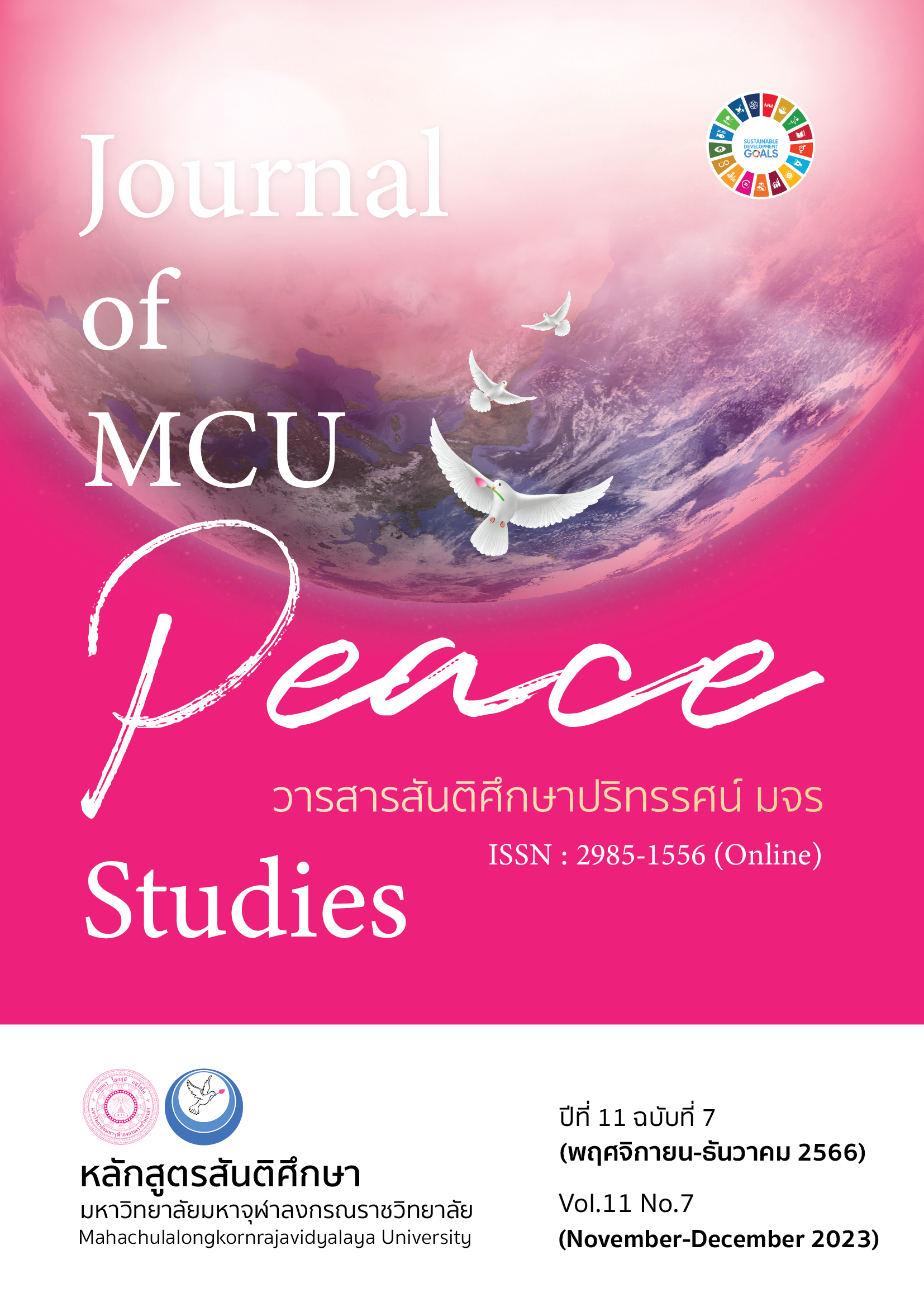การพัฒนาศักยภาพการเกษตรเพื่อเพิ่มผลผลิตในพื้นที่ภาคกลางตอนบน
Main Article Content
บทคัดย่อ
บทความวิจัยนี้มีวัตถุประสงค์ 1) เพื่อศึกษาปัจจัยส่วนบุคคลของเกษตรกรส่งผลต่อการพัฒนาศักยภาพการเกษตรเพื่อเพิ่มผลผลิตในพื้นที่ภาคกลางตอนบน และ 2) เพื่อศึกษาการพัฒนาศักยภาพ ของเกษตรกรส่งผลต่อศักยภาพทางการเกษตรเพื่อเพิ่มผลผลิตในพื้นที่ภาคกลางตอนบน เป็นการวิจัยเชิงผสมผสาน ประชากรและกลุ่มตัวอย่างเชิงปริมาณ คือ เกษตรกรผู้เพาะปลูกข้าวในจังหวัด คือ ลพบุรี พระนครศรีอยุธยา และจังหวัดชัยนาท 384 คน และกลุ่มผู้ให้ข้อมูลสำคัญเชิงคุณภาพ ได้แก่ ผู้บริหารและนักวิชาการสำนักงานวิจัยและพัฒนาการเกษตรเขต 5 จำนวน 15 คน เครื่องมือวิจัยใช้แบบสอบถามและแบบสัมภาษณ์ สถิติที่ใช้วิเคราะห์ข้อมูล ได้แก่ ค่าความถี่ ค่าร้อยละ ค่าเฉลี่ย ส่วนเบี่ยงเบนมาตรฐาน เปรียบเทียบความแตกต่างด้วย t-test และ F-test ทดสอบความสัมพันธ์จากการวิเคราะห์ค่าสหสัมพันธ์แบบเพียร์สัน และวิเคราะห์ถดถอยเชิงพหุคูณ
ผลการวิจัย พบว่า 1) ปัจจัยส่วนบุคคลของเกษตรกร ส่วนใหญ่เป็นเกษตรกรในจังหวัดลพบุรี พระนครศรีอยุธยา และชัยนาท ตามลำดับ มีประสบการณ์ในการทำการเกษตร มีน้ำไม่เพียงพอกับการเพาะปลูก ใช้ทั้งปุ๋ยอินทรีย์/ปุ๋ยชีวภาพ และเพียงพอต่อการใช้จ่ายที่จำเป็นในครอบครัว 2) การพัฒนาศักยภาพของเกษตรกรโดยภาพรวม อยู่ในระดับปานกลาง การพัฒนาศักยภาพของเกษตรกรจะทำให้เพิ่มผลผลิตทางการเกษตร เกษตรกรที่มี จังหวัด อายุ ระดับการศึกษาและรายได้เฉลี่ยต่อปีต่างกัน มีการพัฒนาศักยภาพแตกต่างกัน ที่ระดับนัยสำคัญทางสถิติ .05 การพัฒนาศักยภาพมีความสัมพันธ์ทางบวกระดับสูงกับระดับศักยภาพทางการเกษตรเพื่อเพิ่มผลผลิตในพื้นที่ภาคกลางตอนบน อย่างมีนัยสำคัญทางสถิติที่ระดับ .01 ความต้องการพัฒนาศักยภาพของเกษตรกร ด้านการแสวงหาความรู้ ด้านการยกระดับสู่มาตรฐาน GAP ด้านการพัฒนาภาวะผู้นำ ด้านการรวมกลุ่มสหกรณ์เกษตร และด้านการบูรณาการร่วมมือกับภาครัฐ สามารถอธิบายความผันแปรของศักยภาพทางการเกษตรเพื่อเพิ่มผลผลิตในพื้นที่ภาคกลางตอนบน ที่ 63.70%
Article Details

อนุญาตภายใต้เงื่อนไข Creative Commons Attribution-NonCommercial-NoDerivatives 4.0 International License.
ทัศนะและความคิดเห็นที่ปรากฏในบทความในวารสาร ถือเป็นความรับผิดชอบของผู้เขียนบทความนั้น และไม่ถือเป็นทัศนะและความรับผิดชอบของกองบรรณาธิการ ยินยอมว่าบทความเป็นลิขสิทธิ์ของวารสาร
เอกสารอ้างอิง
Best, J. W. (1977). Research in Education. (3rd ed.) New Jersey: Prentice Hall Inc.
Chantarpenkul, L. (2017). Chapter 9. Agricultural Extension Problems and Solutions. Retrieved June 5, 2021, from https://www.shorturl.asia/xotwm
Department of Agricultural Extension. (2017). 20-Year Agricultural Extension Strategic Plan (2017-2036). Bangkok: Department of Agricultural Extension.
Foundation for Social and Environmental Development. (2017). A Manual for the Preparation of Indicators for Mutual Well-being in Thai Society. Project to Improve the Index of Mutual Well-being in Thai Society. Bangkok: Office of the Commission National Economic and Social Development.
Krejcie, R. V., & Morgan, E. W. (1970). Determining Sampling Size for Research Activities. Educational and Psychological Measurement, 30, 607-610.
Matichon Online. (2021). The Agricultural Economics Office Expects Agricultural GDP for the Whole Year to Grow 2.7%, Ready to Show the Number of Agricultural Exports in the First Half of the Year Rising to 716 Billion. Retrieved August 27, 2021, from https://www.matichon.co.th/economy/news_2875420
Mosher, A. T. (1978). AnIntroduction to Agricultural Extension. New York: Agricultural Development Council.
National Statistical Office. (2019). The Number of Households Farmers Registered Farmers Classified by Province 2014-2019. Retrieved April 24, 2021, from http://statbbi.nso. go.th/staticreport/page/sector/th/11.aspx
Office of Agricultural Economics Ministry of Agriculture and Cooperatives. (2020). Maize for Animal Feed: Planted Area Harvested Area Yields and Yields Per Rai by District, Crop Year 2019-2020. Retrieved November 6, 2020, from http://www.oae.go.th/assets/portals/1/fileups/prcaidata/files/maize%20province%2062.pdf
Office Strategy Management Upper Central Provinces. (2018). The General Situation of the Upper Central Province Group. Retrieved June 6, 2021, from https://www.osmupper central.go.th/content/aboutus.pdf
Online News Time. (2019). Ranking the Share of GDP in the Agricultural Sector Around the World. Retrieved August 27, 2021, from https://bit.ly/2XWzNtL
Sagarik, D., & Chansukree, P. (2017). The Impact of Socio-economic, Institutional, and Climate Change Factors on Agricultural Income and Expenditure of Thai Farmers. Journal of Public Administration, 15(1), 57-83.
Somyana, W. (2018). Research and Development of Potential in the Agricultural Sector of the Community Chiang Mai Province Creatively for Competition in the ASEAN Economic Community Based on the Philosophy of Sufficiency Economy. (Research Report). Chiang Mai: Chiang Mai Rajabhat University.
Spencer, L. M. (1993). Competence at Work: Models for Superior Performance. India: Wiley India Pvt., Limited.
Technology Policy for Agriculture and Sustainable Agriculture Division. (2020). Guidelines for Driving the Agricultural Technology Center and Innovation. Retrieved June 15, 2021, from https://www.opsmoac.go.th/amnatcharoen-manual-files-421291791811


